
Cactus Around Las Vegas, Vegetation Around Las Vegas
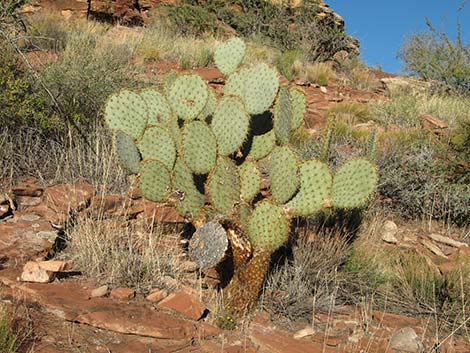 Pancake Pricklypear: upright like a shrub with round pads |
General: Pancake Pricklypear (Opuntia chlorotica) is a cactus with broad, flat pads that grows upright and shrub-like with a large "trunk" and branches of pricklypear pads. The pads are nearly round, and the spines are stout. The growth habit of O. chlorotica is similar to that of O. curvispina with upright growth (O. chlorotica is a bit more upright) and pads a little smaller than O. engelmannii. Good characteristics for O. chlorotica include uni-color spines and flat pads, whereas in O. curvispina, the spines are bicolor and the pads often are curved. Pancake Pricklypear is a fairly common component of vegetation communities in southern-most Nevada on well-drained sandy, gravelly, and rocky soils on upper bajadas, canyons, and moderate slopes into the lower mountains in the Upper Sonoran (Mojave Desert Scrub and Pinyon-Juniper Woodland) life zone. Around Las Vegas, Pancake Pricklypear can be seen most easily in the Mojave National Preserve along Cedar Canyon Road between Cima-Kelso Road and Black Canyon Road, and along Black Canyon Road. In Nevada, this species is fairly common at the southern tip of the state, at least from the South McCullough Wilderness Area southward, and there a few near White Rock Spring and in the Calico Hills at Red Rock Canyon NCA. |
 Uni-color spines and flat pads |
Family: Cactus (Cactaceae). Other Names: Plant Form: Upright, like a short tree. Height: To about 6-feet tall. Trunk: Present (absent in other pricklypear), usually about 2-feet tall; thick, covered with spines. Stems: Entire (many); flat and broad (pancake shaped); 5 to 8-inches across, generally round. Stem Surface: Smooth. Spines: 3 to 8 spines, sometimes absent on lower part of pad; 1 to 2-inches long, straight, flat, yellowish. |
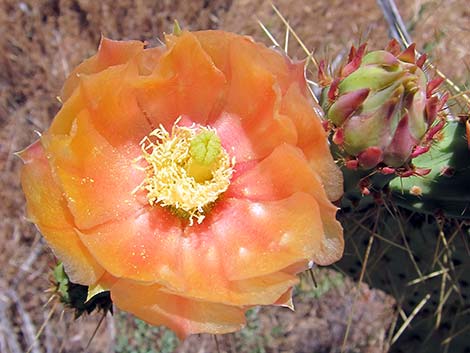 |
Glochids: Present. Flowers: Blooms late spring to early summer. Inflorescence: solitary from top edge of pads. Flowers: yellow to orange, 2 inches across. Fruit: Juicy, to about 1-1/2 inches long, purple-red; guarded by 40 to 70 areoles. Seeds: Many, small (about 3 mm). Habitat: Dry, well-drained sandy, gravelly, and rocky soils on upper bajadas and moderate slopes in the lower mountains. Distribution: Southern California deserts to New Mexico, and south into northern Mexico. Elevation: 2,000 to 4,300 feet. Comments: Hybridizes with Tulip Pricklypear (Opuntia phaeacantha). |
 One of the few Pancake Pricklypear at Red Rocks |
 Pancake Pricklypear on the edge of a wilderness |
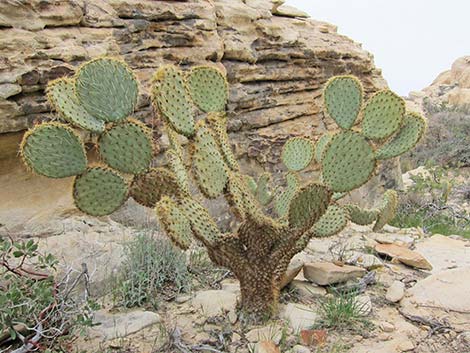 Pancake Pricklypear at Red Rocks |
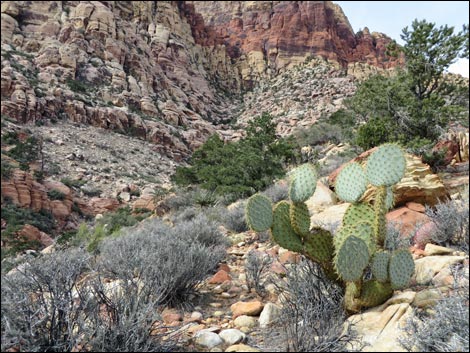 Pancake Pricklypear at Red Rocks |
 Pancake Pricklypear on Virgin Ridge, Gold Butte National Monument |
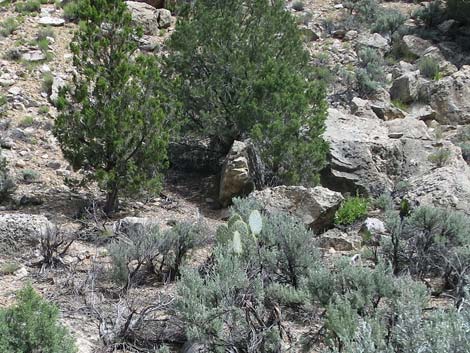 Pancake Pricklypear in Grand Canyon-Parashant National Monument |
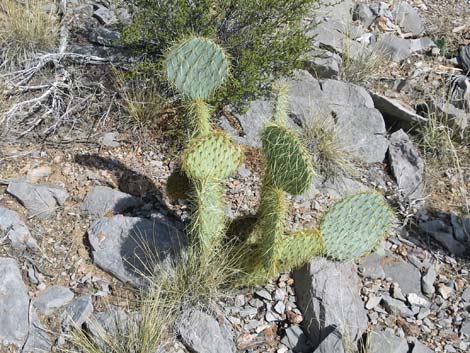 |
 |
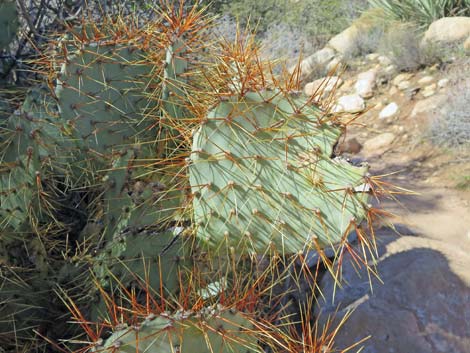 Broad pads on Pancake Pricklypear in Red Rock Canyon NCA |
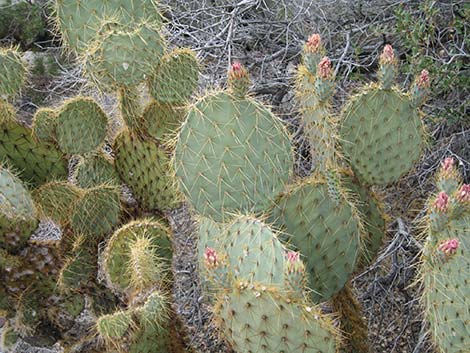 Broad pads |
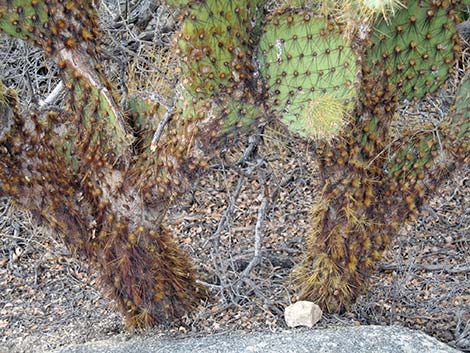 Stout stems |
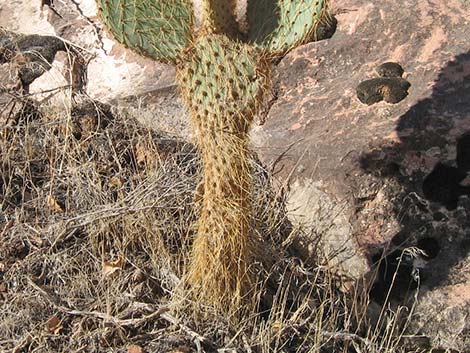 Stout stem |
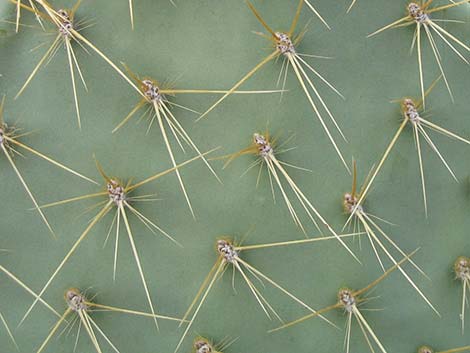 Long, but sparse spines on the pads |
 Denser spines on the edge of the pads |
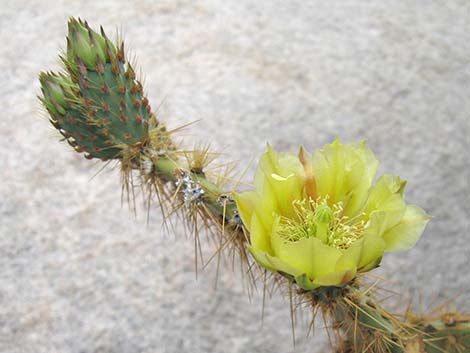 Flower and flower buds |
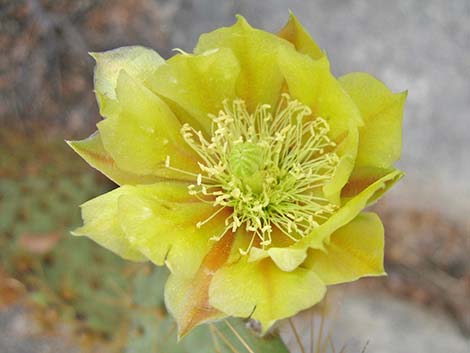 Pancake Pricklypear flower |
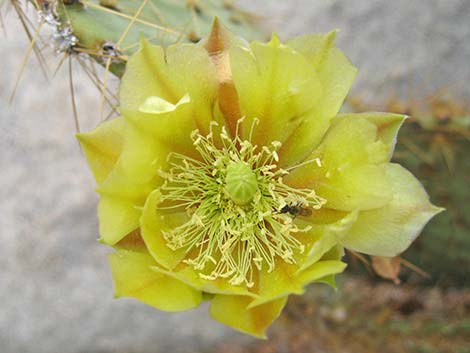 |
 |
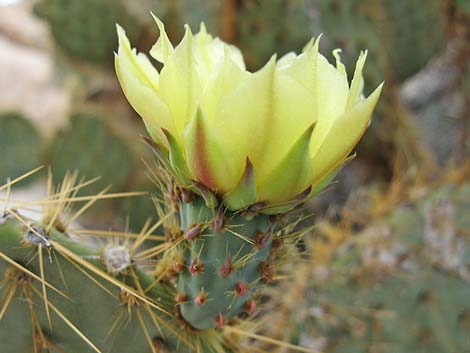 |
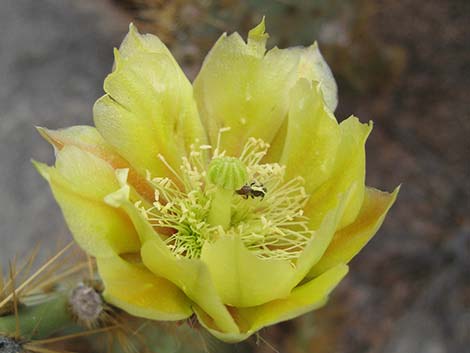 |
 |
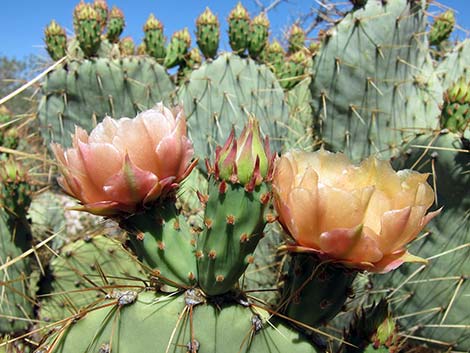 |
 |
 |
 Developing fruits |
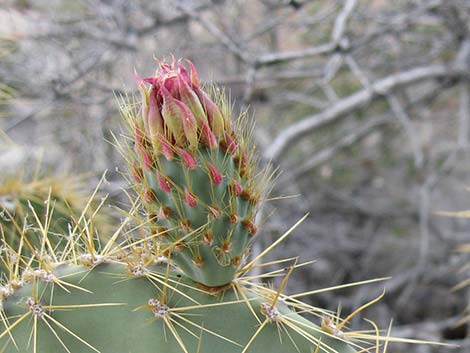 Developing fruits |
 Developing flower buds |
 Ripening fruit |
 Pancake Pricklypear eaten by starving cattle in Gold Butte NM |
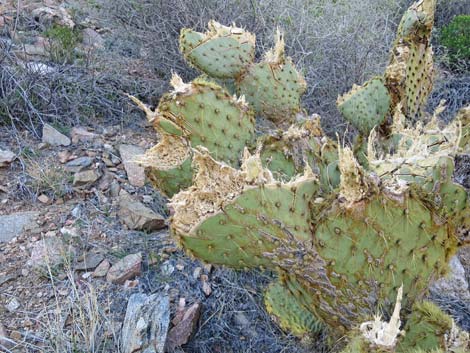 Pancake Pricklypear eaten by starving cattle in Gold Butte NM |
Note: All distances, elevations, and other facts are approximate. Names generally follow the USDA database.
![]() ; Last updated 250605
; Last updated 250605
| All Cactus | Plant Species Index | Glossary | Copyright, Conditions, Disclaimer | Home |